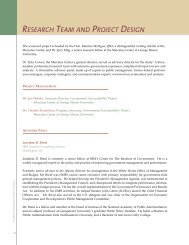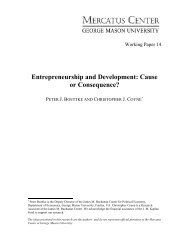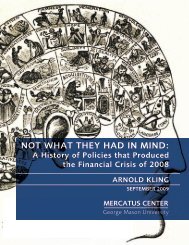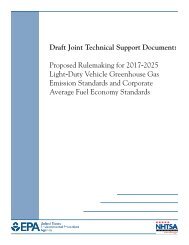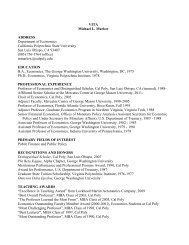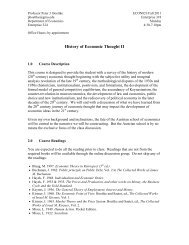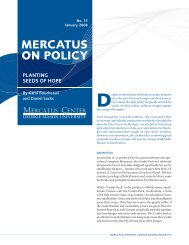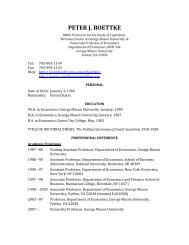A-La-Carte Pricing in the Airline Industry - Graduate Student ...
A-La-Carte Pricing in the Airline Industry - Graduate Student ...
A-La-Carte Pricing in the Airline Industry - Graduate Student ...
You also want an ePaper? Increase the reach of your titles
YUMPU automatically turns print PDFs into web optimized ePapers that Google loves.
additional price differentiation dimension relative to o<strong>the</strong>r firms us<strong>in</strong>g two-part tariffs, such asamusement parks and movie <strong>the</strong>aters.Why Now? Drivers and Tim<strong>in</strong>g of <strong>the</strong> Ancillary Revenue MovementAs proposed <strong>in</strong> <strong>the</strong> section above, a-la-carte pric<strong>in</strong>g <strong>in</strong> <strong>the</strong> airl<strong>in</strong>e <strong>in</strong>dustry is a stableequilibrium aris<strong>in</strong>g from customer heterogeneity and distribution <strong>in</strong> a spatial framework. So longas duopolistic firms <strong>in</strong> such a situation employ non-l<strong>in</strong>ear pric<strong>in</strong>g, Armstrong and Vickers predictthat a two-part tariff will emerge as a stable equilibrium <strong>in</strong> <strong>the</strong> <strong>in</strong>dustry. If two-part tariffs and a-la-carte pric<strong>in</strong>g are profitable strategies for airl<strong>in</strong>es, given vary<strong>in</strong>g customer preferences anddifferent valuations of ancillary services, <strong>the</strong>re rema<strong>in</strong>s an additional nagg<strong>in</strong>g question: why haveairl<strong>in</strong>es waited until <strong>the</strong> 2000s to implement a bus<strong>in</strong>ess model focused on ancillary revenueswhen <strong>the</strong>y have had pric<strong>in</strong>g freedom s<strong>in</strong>ce deregulation?Though <strong>in</strong>terviewees broadly discussed conditions endemic to <strong>the</strong> airl<strong>in</strong>e <strong>in</strong>dustry as awhole, <strong>in</strong>terview data can only be assumed to apply to that air carrier alone. None<strong>the</strong>less, <strong>the</strong>sedata can be comb<strong>in</strong>ed with <strong>in</strong>dustry facts and economic <strong>the</strong>ory to build a model of why airl<strong>in</strong>esmight not have adopted an a-la-carte model earlier. Ultimately, it appears as if <strong>the</strong>re are fourprimary rationales for this observed delay: revenue pressure from excess capacity and low-costcarrier (LCC) competition, technological and exogenous changes, <strong>the</strong> role of entrepreneurialattention, and solv<strong>in</strong>g <strong>the</strong> first-mover problem.Revenue Pressure from Excess Capacity and LCC CompetitionThe clearest conclusion from <strong>in</strong>terviewees was that a struggle to raise revenues was <strong>the</strong>pr<strong>in</strong>cipal reason why airl<strong>in</strong>es began unbundl<strong>in</strong>g certa<strong>in</strong> products and services—most prom<strong>in</strong>ently30



